Single Tooth Implants
Dental Implants With
a Crown
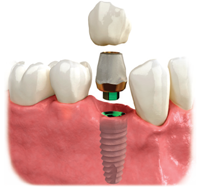
Attractive smile
- Full chewing ability
Preserve healthy teeth and jawbone
Maintains bone
Traditional Dental Crowns and Bridges
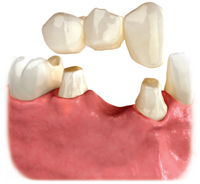
Attractive smile
Grinds down healthy teeth
May lead to bone loss under bridge
Greater risk of cavities and tooth failure
Case
Single Tooth Implant Case- I
(Case done by Dr. Vijay Deshmukh M.D.S. / Dental Implantologist )
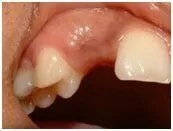 A young college going girl lost her tooth due to roadside accident and was looking for ideal replacement solution. I recommended undergoing dental implant procedure.
A young college going girl lost her tooth due to roadside accident and was looking for ideal replacement solution. I recommended undergoing dental implant procedure.
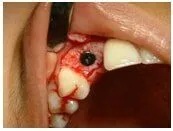 Under local anesthesia we placed titanium implant in the region of maxillary right lateral incisor. Dental implant was placed within 20 minutes of procedure.
Under local anesthesia we placed titanium implant in the region of maxillary right lateral incisor. Dental implant was placed within 20 minutes of procedure.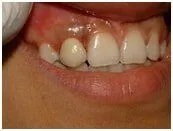 Dental Implant was exposed after 3 months and impressions were sent to the laboratory.
Dental Implant was exposed after 3 months and impressions were sent to the laboratory.
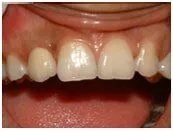 Zirconia crown was cemented on the dental implant abutment. Patient was extremely happy with the result.
Zirconia crown was cemented on the dental implant abutment. Patient was extremely happy with the result.
Single Tooth Implant Case- II
(Case done by Dr. Vijay Deshmukh M.D.S. / Dental Implantologist )
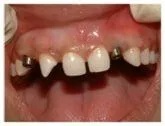 A middle aged woman came to me with missing teeth in her upper anterior region which in turn was affecting her personal and social life. On examination I advised her to go for implant procedure as the best aesthetic and long lasting solution.
A middle aged woman came to me with missing teeth in her upper anterior region which in turn was affecting her personal and social life. On examination I advised her to go for implant procedure as the best aesthetic and long lasting solution.
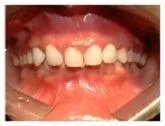 Under local anesthesia titanium implants were placed in the region of upper right canine and upper left lateral incisor region – both in a single sitting of less than an hour.
Under local anesthesia titanium implants were placed in the region of upper right canine and upper left lateral incisor region – both in a single sitting of less than an hour. After 3 months the ceramic crowns were cemented on the implant abutments.
After 3 months the ceramic crowns were cemented on the implant abutments.
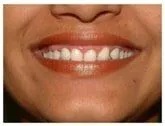 Now, our patient is happy, confident and enjoys flashing her smile with her perfectly restored teeth.
Now, our patient is happy, confident and enjoys flashing her smile with her perfectly restored teeth.
Frequently Asked Questions
A dental implant provides several advantages over other tooth replacement options. In addition to looking and functioning like a natural tooth, a dental implant replaces a single tooth without sacrificing the health of neighboring teeth. The other common treatment for the loss of a single tooth, a tooth-supported fixed bridge, requires that adjacent teeth be ground down to support the cemented bridge.
Because a dental implant will replace your tooth root, the bone is better preserved. With a bridge, some of the bone that previously surrounded the tooth begins to resorb (deteriorate). Dental implants integrate with your jawbone, helping to keep the bone healthy and intact.
In the long term, a single implant can be more esthetic and easier to keep clean than a bridge. Gums can recede around a bridge, leaving a visible defect when the metal base or collar of the bridge becomes exposed.
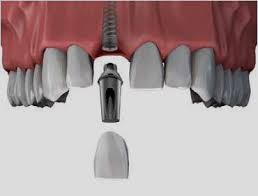
Often, a second step of the procedure is necessary to uncover the implant and attach an extension. This temporary healing cap completes the foundation on which your new tooth will be placed. Your gums will be allowed to heal for a couple of weeks following this procedure. Finally, a replacement tooth called a crown will be created and attached to a small metal post, called an abutment. After a short time, you will experience restored confidence in your smile and your ability to chew and speak. Dental implants are so natural-looking and feeling, you may forget you ever lost a tooth.


